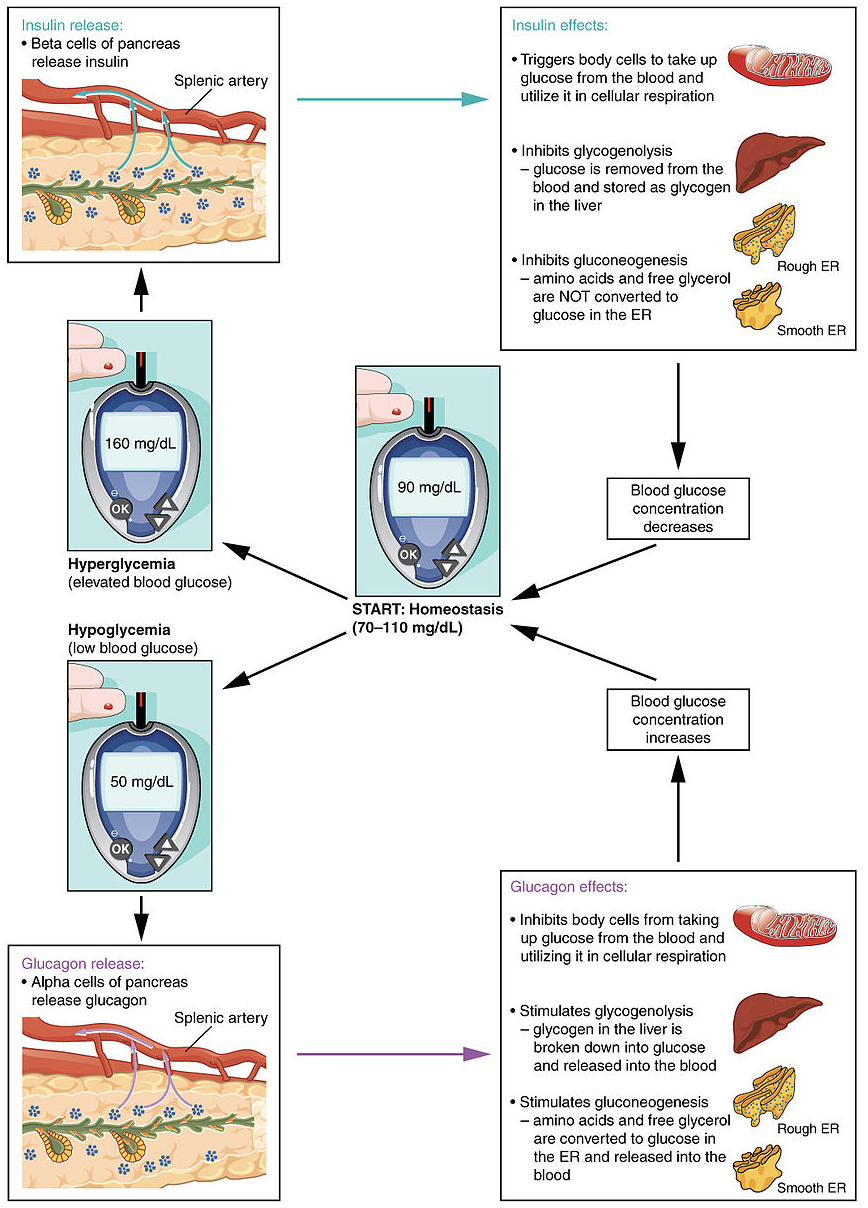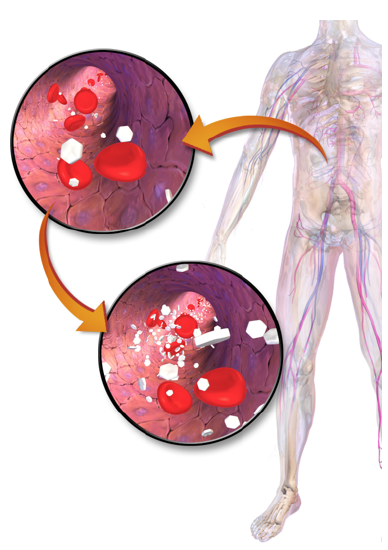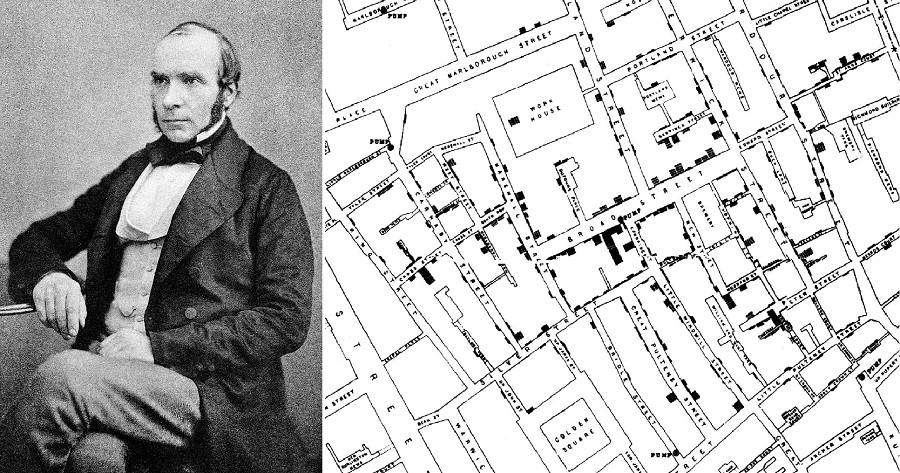21.2: Homeostasis and Disease
- Page ID
- 17745
\( \newcommand{\vecs}[1]{\overset { \scriptstyle \rightharpoonup} {\mathbf{#1}} } \)
\( \newcommand{\vecd}[1]{\overset{-\!-\!\rightharpoonup}{\vphantom{a}\smash {#1}}} \)
\( \newcommand{\dsum}{\displaystyle\sum\limits} \)
\( \newcommand{\dint}{\displaystyle\int\limits} \)
\( \newcommand{\dlim}{\displaystyle\lim\limits} \)
\( \newcommand{\id}{\mathrm{id}}\) \( \newcommand{\Span}{\mathrm{span}}\)
( \newcommand{\kernel}{\mathrm{null}\,}\) \( \newcommand{\range}{\mathrm{range}\,}\)
\( \newcommand{\RealPart}{\mathrm{Re}}\) \( \newcommand{\ImaginaryPart}{\mathrm{Im}}\)
\( \newcommand{\Argument}{\mathrm{Arg}}\) \( \newcommand{\norm}[1]{\| #1 \|}\)
\( \newcommand{\inner}[2]{\langle #1, #2 \rangle}\)
\( \newcommand{\Span}{\mathrm{span}}\)
\( \newcommand{\id}{\mathrm{id}}\)
\( \newcommand{\Span}{\mathrm{span}}\)
\( \newcommand{\kernel}{\mathrm{null}\,}\)
\( \newcommand{\range}{\mathrm{range}\,}\)
\( \newcommand{\RealPart}{\mathrm{Re}}\)
\( \newcommand{\ImaginaryPart}{\mathrm{Im}}\)
\( \newcommand{\Argument}{\mathrm{Arg}}\)
\( \newcommand{\norm}[1]{\| #1 \|}\)
\( \newcommand{\inner}[2]{\langle #1, #2 \rangle}\)
\( \newcommand{\Span}{\mathrm{span}}\) \( \newcommand{\AA}{\unicode[.8,0]{x212B}}\)
\( \newcommand{\vectorA}[1]{\vec{#1}} % arrow\)
\( \newcommand{\vectorAt}[1]{\vec{\text{#1}}} % arrow\)
\( \newcommand{\vectorB}[1]{\overset { \scriptstyle \rightharpoonup} {\mathbf{#1}} } \)
\( \newcommand{\vectorC}[1]{\textbf{#1}} \)
\( \newcommand{\vectorD}[1]{\overrightarrow{#1}} \)
\( \newcommand{\vectorDt}[1]{\overrightarrow{\text{#1}}} \)
\( \newcommand{\vectE}[1]{\overset{-\!-\!\rightharpoonup}{\vphantom{a}\smash{\mathbf {#1}}}} \)
\( \newcommand{\vecs}[1]{\overset { \scriptstyle \rightharpoonup} {\mathbf{#1}} } \)
\( \newcommand{\vecd}[1]{\overset{-\!-\!\rightharpoonup}{\vphantom{a}\smash {#1}}} \)
\(\newcommand{\avec}{\mathbf a}\) \(\newcommand{\bvec}{\mathbf b}\) \(\newcommand{\cvec}{\mathbf c}\) \(\newcommand{\dvec}{\mathbf d}\) \(\newcommand{\dtil}{\widetilde{\mathbf d}}\) \(\newcommand{\evec}{\mathbf e}\) \(\newcommand{\fvec}{\mathbf f}\) \(\newcommand{\nvec}{\mathbf n}\) \(\newcommand{\pvec}{\mathbf p}\) \(\newcommand{\qvec}{\mathbf q}\) \(\newcommand{\svec}{\mathbf s}\) \(\newcommand{\tvec}{\mathbf t}\) \(\newcommand{\uvec}{\mathbf u}\) \(\newcommand{\vvec}{\mathbf v}\) \(\newcommand{\wvec}{\mathbf w}\) \(\newcommand{\xvec}{\mathbf x}\) \(\newcommand{\yvec}{\mathbf y}\) \(\newcommand{\zvec}{\mathbf z}\) \(\newcommand{\rvec}{\mathbf r}\) \(\newcommand{\mvec}{\mathbf m}\) \(\newcommand{\zerovec}{\mathbf 0}\) \(\newcommand{\onevec}{\mathbf 1}\) \(\newcommand{\real}{\mathbb R}\) \(\newcommand{\twovec}[2]{\left[\begin{array}{r}#1 \\ #2 \end{array}\right]}\) \(\newcommand{\ctwovec}[2]{\left[\begin{array}{c}#1 \\ #2 \end{array}\right]}\) \(\newcommand{\threevec}[3]{\left[\begin{array}{r}#1 \\ #2 \\ #3 \end{array}\right]}\) \(\newcommand{\cthreevec}[3]{\left[\begin{array}{c}#1 \\ #2 \\ #3 \end{array}\right]}\) \(\newcommand{\fourvec}[4]{\left[\begin{array}{r}#1 \\ #2 \\ #3 \\ #4 \end{array}\right]}\) \(\newcommand{\cfourvec}[4]{\left[\begin{array}{c}#1 \\ #2 \\ #3 \\ #4 \end{array}\right]}\) \(\newcommand{\fivevec}[5]{\left[\begin{array}{r}#1 \\ #2 \\ #3 \\ #4 \\ #5 \\ \end{array}\right]}\) \(\newcommand{\cfivevec}[5]{\left[\begin{array}{c}#1 \\ #2 \\ #3 \\ #4 \\ #5 \\ \end{array}\right]}\) \(\newcommand{\mattwo}[4]{\left[\begin{array}{rr}#1 \amp #2 \\ #3 \amp #4 \\ \end{array}\right]}\) \(\newcommand{\laspan}[1]{\text{Span}\{#1\}}\) \(\newcommand{\bcal}{\cal B}\) \(\newcommand{\ccal}{\cal C}\) \(\newcommand{\scal}{\cal S}\) \(\newcommand{\wcal}{\cal W}\) \(\newcommand{\ecal}{\cal E}\) \(\newcommand{\coords}[2]{\left\{#1\right\}_{#2}}\) \(\newcommand{\gray}[1]{\color{gray}{#1}}\) \(\newcommand{\lgray}[1]{\color{lightgray}{#1}}\) \(\newcommand{\rank}{\operatorname{rank}}\) \(\newcommand{\row}{\text{Row}}\) \(\newcommand{\col}{\text{Col}}\) \(\renewcommand{\row}{\text{Row}}\) \(\newcommand{\nul}{\text{Nul}}\) \(\newcommand{\var}{\text{Var}}\) \(\newcommand{\corr}{\text{corr}}\) \(\newcommand{\len}[1]{\left|#1\right|}\) \(\newcommand{\bbar}{\overline{\bvec}}\) \(\newcommand{\bhat}{\widehat{\bvec}}\) \(\newcommand{\bperp}{\bvec^\perp}\) \(\newcommand{\xhat}{\widehat{\xvec}}\) \(\newcommand{\vhat}{\widehat{\vvec}}\) \(\newcommand{\uhat}{\widehat{\uvec}}\) \(\newcommand{\what}{\widehat{\wvec}}\) \(\newcommand{\Sighat}{\widehat{\Sigma}}\) \(\newcommand{\lt}{<}\) \(\newcommand{\gt}{>}\) \(\newcommand{\amp}{&}\) \(\definecolor{fillinmathshade}{gray}{0.9}\)Imagine driving on this seemingly endless road. Hopefully, your imaginary car is equipped with cruise control. Cruise control can help keep you safe as well as help you avoid a speeding ticket by keeping the speed of the car at the speed limit. Cruise control works by monitoring the car’s speed and adjusting the throttle as needed to keep the speed within a narrow range around the set speed limit. If the car starts to go faster than the set limit, it causes the throttle to release less gas until the speed drops back down to the setpoint. The opposite happens if the car’s speed starts to fall below the set speed limit. Cruise control on a car is a good analogy for physiological mechanisms that maintain the human body in a steady state.
Homeostasis

When the human body is maintained in a steady state, the condition is called homeostasis. The body consists of trillions of cells that perform many different functions, but all of them require a similar internal environment with important variables kept within narrow ranges. For example, cells require a certain range of body temperature, pH of extracellular fluids, and concentrations of mineral ions and glucose in the blood. Each of these variables must be maintained within a narrow range of values regardless of changes in the external environment, food that has been consumed, the body’s activity level, or other changes in the human organism.
Homeostats
Keeping all of the body’s internal variables within normal ranges is the function of physiological mechanisms called homeostats. Different variables are controlled by different homeostats, but all homeostats work in the same general way. A stimulus from the variable in question is sensed and compared with the normal range of values for the variable. If the actual value of the variable is outside the normal range, it elicits a response that works to move the variable back within the normal range. All homeostats use negative feedback loops to bring excessively high or low values of a variable back within the normal range.
Controlling Blood Glucose
Consider the control of the concentration of glucose in the blood as an example. The homeostat that controls this variable is illustrated and described in Figure \(\PageIndex{1}\). The primary sensors that monitor blood glucose concentration are beta cells in the pancreas. If beta cells detect a rise in the blood glucose concentration above the normal range, they secrete the hormone insulin into the blood. Insulin, in turn, acts on cells throughout the body, stimulating them to take up glucose from the blood and use it for cellular respiration. Insulin also stimulates cells in the liver to take up glucose from the blood and turn it into the complex carbohydrate glycogen for storage. At the same time, insulin inhibits the liver from breaking down stored glycogen and releasing it as glucose. Insulin also inhibits the endoplasmic reticula (ER) of cells from converting amino acids and glycerol into glucose.
If the beta cells detect a drop in the blood glucose concentration below the normal range, they stop secreting insulin into the blood, and the alpha cells of the pancreas are stimulated to secrete the hormone glucagon into the blood. Glucagon, in turn, inhibits the uptake of glucose from the blood by the liver and by fat and muscle cells throughout the body. Instead, the liver is stimulated to make glucose by breaking down stored glycogen, and the ER in cells is stimulated to make glucose from amino acids and glycerol. Glucose from all these sources is released into the blood to bring the blood glucose concentration back to the normal range.
Homeostatic Imbalance and Disease

Sometimes, homeostats fail to perform properly. This can cause homeostatic imbalance, a condition in which variables in the internal environment are no longer maintained within normal ranges. As a result, cells may not get everything they need, or toxic wastes may accumulate in cells. Eventually, homeostatic imbalance may lead to disease. The term disease can be broadly defined as a condition that is associated with the impairment of normal body functioning. Disease states can cause — as well as be caused by — the failure of homeostats to maintain homeostasis.
Blood Glucose Imbalance: Type 1 Diabetes
One of the best-known examples of a disease caused by homeostatic imbalance is type 1 diabetes. In type 1 diabetes, the blood glucose homeostat ceases to function because the beta cells of the pancreas are destroyed, most often by the body’s own immune system. Without beta cells, the body’s blood glucose sensors are absent and insulin is not produced in response to high blood concentrations of glucose. Without insulin, cells are not stimulated to take up glucose from the blood, the liver does not convert glucose to glycogen for storage, and the conversion of amino acids and glycerol into glucose is not inhibited. As a result, the concentration of glucose in the blood may rise to dangerously high levels (Figure \(\PageIndex{2}\)).
If the high blood glucose concentrations of type 1 diabetes are not controlled, they may lead to further homeostatic imbalances by damaging tissues and organs throughout the body. For example, high blood glucose concentrations may damage blood vessels in the kidneys and cause kidney disease and even kidney failure. The inability of the kidneys to function normally causes further homeostatic imbalances because the kidneys are unable to adequately filter the blood. This may lead to high acid levels in the blood and imbalances in blood concentrations of mineral ions. Imbalances of mineral ions, in turn, may adversely affect bone health. Kidney failure can also have deleterious effects on cardiovascular function and cause cardiovascular disease. In fact, death from cardiovascular disease causes close to half of all deaths of people with advanced kidney failure.
Aging, Homeostatic Imbalance, and Disease
The normal aging process may bring about a reduction in the efficiency of the body’s homeostats. This makes elderly people more susceptible to disease. For example, older people may have a harder time regulating their body temperature. This is one reason they are more likely than younger people to develop heat stroke and other diseases caused by the body overheating. Older people also have a harder time fighting off many infectious diseases and cancer.
Types of Disease
Although virtually all diseases involve homeostatic imbalances in some way, there are many different underlying causes of disease. For example, some diseases are caused by pathogens, whereas others are not.
Infectious vs. Noninfectious Diseases
Pathogens are agents — usually microorganisms — that cause disease. Diseases caused by pathogens are called infectious, or communicable, diseases because pathogens can spread the diseases by moving from host to host. Types of pathogens that commonly cause human diseases include bacteria, viruses, fungi, and protozoa (Figure \(\PageIndex{3}\)). Examples of infectious diseases include the common cold, influenza, chickenpox, cholera, and malaria. Some infectious diseases are spread only or mainly through sexual contact. These diseases are called sexually transmitted infections (STIs) and include gonorrhea and syphilis (see the concept of Sexually Transmitted Infections to learn more).
Diseases that are not caused by pathogens are called noninfectious diseases. They are also called non-communicable diseases because they do not spread from person to person. Examples of noninfectious diseases include diabetes, most types of cancer, and cardiovascular diseases. There are numerous possible causes of noninfectious diseases. They include inherited mutations, exposure to environmental toxins such as air pollution, and unhealthy lifestyle choices such as overeating or smoking.
Acute vs. Chronic Diseases
Most infectious diseases are also acute diseases, which are short-term. After a person gets sick, an acute disease either runs its course (with or without medical intervention) until the person gets better or leads to the death of the infected individual.
Many noninfectious diseases are chronic, meaning they are long-term or even lifelong. For example, people who develop type 1 diabetes have the disease for life, as do most people who develop cardiovascular diseases. Some noninfectious diseases, such as cancer, may be cured, or they may be kept under control as chronic diseases with medications. Certain infectious diseases are also chronic rather than acute because they are caused by pathogens that the body cannot eliminate. Examples are the viruses that cause herpes and AIDS.
Epidemic, Pandemic, and Endemic Diseases
Some infectious diseases spread through a population from time to time, such as large-scale disease outbreaks called epidemics, but are not always present in the population, at least not at high levels. An example is the flu (influenza). In the United States, flu spreads through the population at a certain time each year (generally, from November through April) but is not commonly found at other times.
Some epidemic diseases lead to pandemics. A pandemic is an epidemic that spreads across multiple populations, often across continents or even worldwide. Throughout human history, there have been many pandemics of infectious diseases. One of the most devastating pandemics was the Black Death (bubonic plague) pandemic that spread throughout Europe and much of Asia in the mid-1300s. In this pandemic, an estimated 75 million people died. More recent pandemics include influenza pandemics that occurred in 1918 and 2009. In December 2019, a novel coronavirus disease (COVID 19) spread over all continents. By April 2021, it had killed 3.1 million people worldwide.
Some diseases are always present in a population. Such diseases are referred to as endemic diseases. For example, in many tropical countries, malaria is an endemic disease. It is transmitted year-round by mosquitoes in hot climates rather than appearing in periodic outbreaks that occur only at certain times of the year.
Studying Disease in Human Populations
Epidemiology is the science that focuses on the patterns, causes, and effects of diseases in human populations. It is the cornerstone of public health. It shapes health policy decisions and medical practice by identifying risk factors for disease and targets for preventive healthcare. The term epidemiology was first applied to the study of epidemics, but it is now widely applied to the study of disease in general and even to the study of many non-disease conditions, such as high blood pressure and obesity.
The Father of Epidemiology

The science of epidemiology has deep roots. The ancient Greek physician Hippocrates (about 460 to 379 BCE) was the first person known to have examined relationships between the occurrence of disease in populations and environmental factors. He also coined the terms epidemic and endemic. A century later, a Greek physician named Galen developed the idea that miasma (“bad air”) was the cause of diseases such as bubonic plague and cholera, an idea that was accepted by most physicians until well into the 1800s. However, the origin of modern epidemiology is generally attributed to an English physician named John Snow (Figure \(\PageIndex{4}\)), who is often referred to as the father of epidemiology. Snow gained fame for his scientific investigations into the cause of the cholera epidemics that led to many deaths in 19th century London.
Dr. Snow was skeptical of the still-dominant miasma theory, but the germ theory of disease would not be fully formed for several decades. As a result, Snow did not understand the mechanism by which infectious diseases such as cholera are transmitted. While treating cholera cases during an outbreak in London in the mid-1800s, Snow observed a pattern in the distribution of homes where people got the disease. Homes of cases appeared to cluster around a particular public well. Snow wondered if cholera was spread through the drinking water in this well. He plotted homes with cholera cases on a map (Figure \(\PageIndex{4}\)) and then showed that all of these homes received their drinking water from the well in question. Snow also did chemical and microscopic examinations of water from the well but could not prove conclusively that it was causing cholera. However, his demonstration of the pattern of the disease in the population was convincing enough to persuade officials to close down the well. They removed the handle from the pump the next day, an action that has been credited with stopping the cholera outbreak.
It was later discovered that the well in question had been dug only a few feet from an old cesspit, which had begun to leak fecal matter into the well water. This suggested that cholera spreads through a fecal-oral route. However, this explanation was not immediately accepted because it was too unpleasant for most people to contemplate. It took several more years — and additional cholera outbreaks — before this explanation for the spread of the disease could no longer be denied. Eventually, Snow’s work inspired fundamental changes in the water and waste systems of London and other cities and eventually led to significant improvements in public health around the world. Snow’s contributions to epidemiology and public health are now recognized by numerous honors and monuments to his work.
More Recent Contributions of Epidemiology
More recent pioneers in epidemiology include the British doctors Richard Doll and Austin Bradford Hill, whose large-scale observational studies in the mid-1900s showed statistically significant links between tobacco smoking and lung cancer. Doll and Hill were among the first scientists to use epidemiology to study noninfectious diseases. Since then, epidemiology has been applied to the study of many different diseases, and epidemiological methods have become more sophisticated and rigorous over time. The results of epidemiological studies continue to make a significant contribution to population-based health management. The results are used to assess the health status and needs of the public and to implement and evaluate interventions that are designed to improve public health.
Review
- Define homeostasis.
- What are homeostats?
- Describe the homeostat that controls blood glucose concentration.
- What happens if homeostats fail to perform properly? Give an example.
- Compare and contrast infectious and noninfectious diseases.
- Compare and contrast acute and chronic diseases. What is an example of each type of disease?
- Define and relate the terms epidemic and pandemic.
- What is an endemic disease?
- What is the focus of epidemiology? What are the applications of epidemiological research?
- Who was John Snow? What is the significance of his work in epidemiology?
- True or False. Acute diseases are always less dangerous than chronic diseases.
- True or False. Influenza can cause an epidemic or a pandemic.
- Briefly describe the relationship between homeostasis and disease.
- Can an infectious disease be a chronic disease? Why or why not?
- Suppose you were an epidemiologist studying a new infectious disease that is making many people ill. What are some things you would want to know so that you can distinguish between whether it is an endemic, a pandemic, or an epidemic?
Explore More
Attributions
- The Homeostatic Regulation of Blood Glucose Levels by OpenStax College, CC BY 3.0, via Wikimedia Commons
- Hyperglycemia by Blausen.com staff (2014). "Medical gallery of Blausen Medical 2014". WikiJournal of Medicine 1 (2). DOI:10.15347/wjm/2014.010. ISSN 2002-4436. CC BY 3.0 via Wikimedia Commons
- Plasmodium slides by CDC/Steven Glenn, public domain via Wikimedia Commons
- John Snow, public domain via Wikimedia Commons
- Snow Cholera map by John Snow, public domain via Wikimedia Commons
- Text adapted from Human Biology by CK-12 licensed CC BY-NC 3.0


